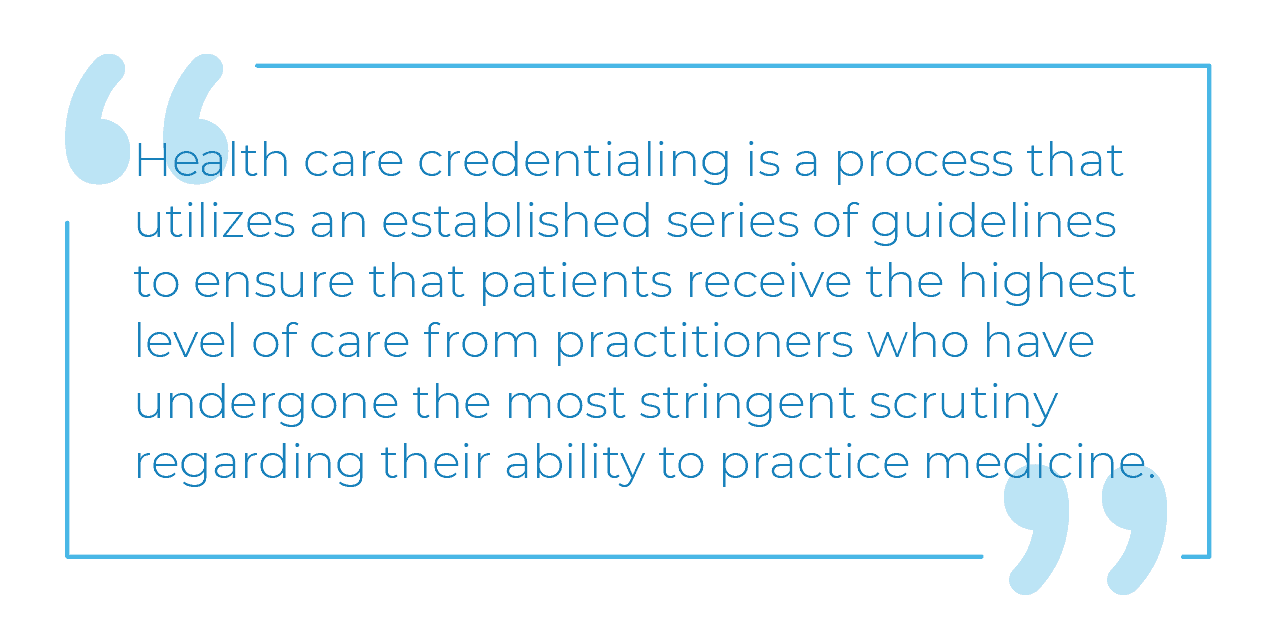The Pulse
Health Care Credentialing, Privileging: Information & Importance
Category: Credentialing
IN A NUTSHELL:
- Credentialing ensures providers are qualified
- Credentialing helps protect reputation of facilities
- Privileging improves efficiency and quality of patient care
When a physician applies to practice within a health care facility, they are asked to complete an application and allow a credentialing entity to research their professional documents.

The process assures the patient that he or she is being treated by providers whose training, qualifications, licensure, and ability to practice medicine are acceptable and ensures that all health care workers are held to the same standard.
Health care facilities have a legal responsibility to verify a provider’s identity, education, work experience, malpractice history, and license verifications to protect patients from unqualified providers.
The credentialing process must be re-done every two years in addition to fulfilling continuing medical education (CME) requirements.

According to the American Medical Association’s (AMA) Principle of Medical Ethics, the purpose of privileging is to improve the efficiency and quality of patient care in the hospital.
The process can be divided into two categories:
- Base privilege decisions on:
- Candidate’s training, experience, demonstrated competence
- Availability of facilities
- Overall medical needs of the community, the hospital, and especially patients
- Avoid basing privilege decisions on:
- Numbers of patients the candidate has admitted to the facility
- Economic or insurance status of patients admitted by the candidate
- Personal friendships, antagonisms, jurisdictional disputes, or fear of competition
After privileges have been determined, some health care workers undergo a monitoring period as they begin their duties. While the credentialing process in and of itself can be a long process depending on the method used, it is a fundamental first step to ensure reputable and qualified health care services.
Learn More:
White Paper | Health Care Credentialing: Methods, Management, and Cost
White Paper | Provider Credentialing vs. Provider Enrollment: Differences and Solutions
Related Posts: